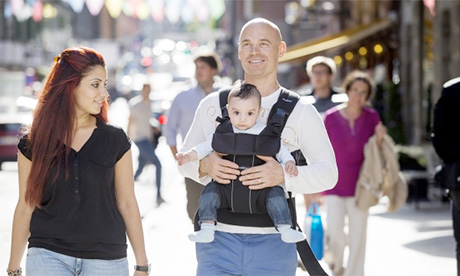In an iconic article published a decade ago and entitled, “The Motherhood Experiment,” the New York Times Magazine celebrated Sweden for solving the population and family problems of modern European society.
It explained: “Curiously, Europe’s lowest birthrates are seen in countries, mostly Catholic, where the old idea that the man is the breadwinner and the woman is the child-raiser holds strong. . . .
Meanwhile, countries that support high numbers of working women, like [the Scandinavian countries], have among the highest birthrates.”
The author called this “the fertility paradox.”
These arguments actually have an almost religious hold on the social policy architects of the European Union.
As Jean-Claude Chesnois summarizes, “in Sweden, . . . empowerment of women insures against a very low birth rate.”
With Sweden again in mind, sociologist Peter McDonald asserts that “In a context of high gender equity in individual-oriented institutions, higher gender equity in family-oriented institutions will tend to raise fertility.”
J.M. Hoem links Sweden’s success to a “softening” of “the effects of women’s labor force participation on their life sufficiently to reduce the inherent role conflict [relative to motherhood] to a manageable level.”
Referring to Sweden, Paul Demeny concludes that “few social policies enjoy greater unqualified support from demographers and sociologists than those seeking” to make “participation of women in the labor force compatible with raising children.”
Of course, the deeper source of anxiety driving these analysts has been the plummeting fertility of the European peoples, a continent-wide development. In the year 2014, the 28 nations of the European Union reported a combined fertility of 1.58 live births per woman, only 75% of the births needed to replace a generation.
Almost all of these nations have recorded declines in numbers over the past decades, with deaths outnumbering births.
Moreover, these declines are expected to continue.
Eurostat, the statistics-gathering body of the European Commission, reports—using a set of assumptions concerning emigration, fertility, mortality, and net migration—“that the projected number of deaths in the EU-28 will be higher than the projected number of births for the whole of the period 2016 to 2080.”
Furthermore, the percentage of the very elderly (over 80) will increase from 5.1% in 2014 to 12.3% in 2080, while the working-age population will continue to shrink.
The median age of the population is expected to increase by 4.2 years in the same period.
The report concludes, “ageing will continue across all of the EU Member States, Iceland, Norway and Switzerland.”
The Eurostat officials’ only hope is that “migration has the potential to help delay the ageing process in some of the EU Member States.”
However, they acknowledge that “it may also speed up the process of ageing in those Member States which are characterized by a relatively high proportion of their working-age population leaving, for example in search of work.”
And not only is the population shrinking and aging. The institutions which historically have held up childbearing are failing.
In Northern Europe, marriage is increasingly rare, replaced by cohabitation; in Southern Europe, young adults increasingly avoid both marriage and cohabitation, refusing to form childbearing unions of any sort.
This is the essence of the joint European family and population crisis of the twenty-first century. Continue reading
Additional readingNews category: Features.




